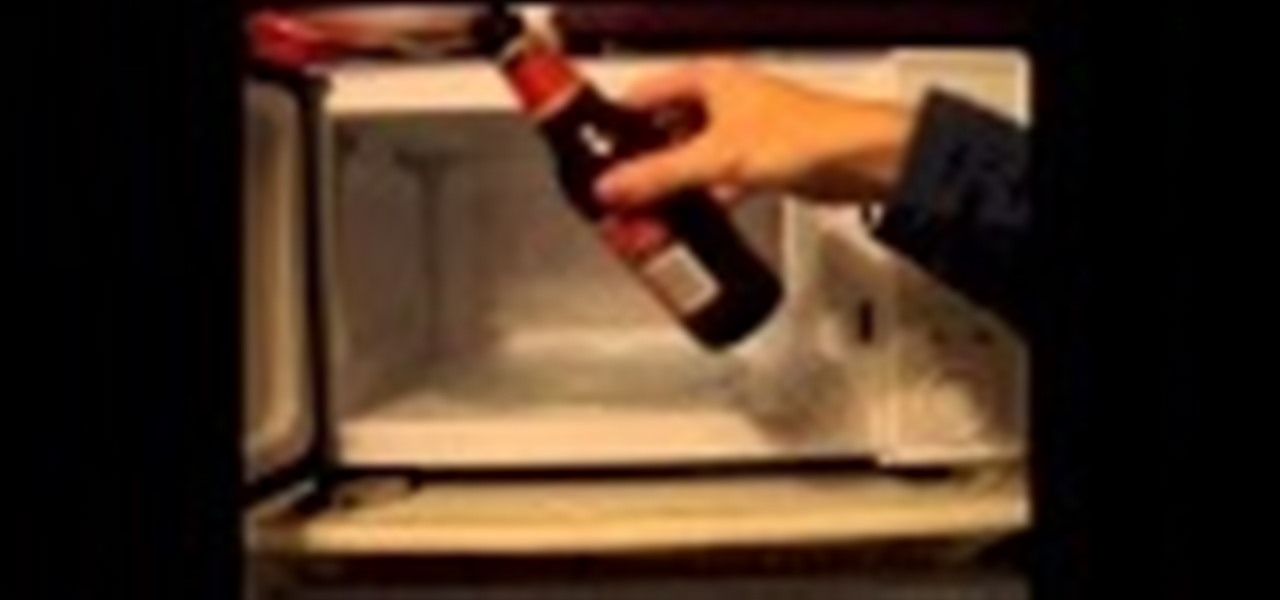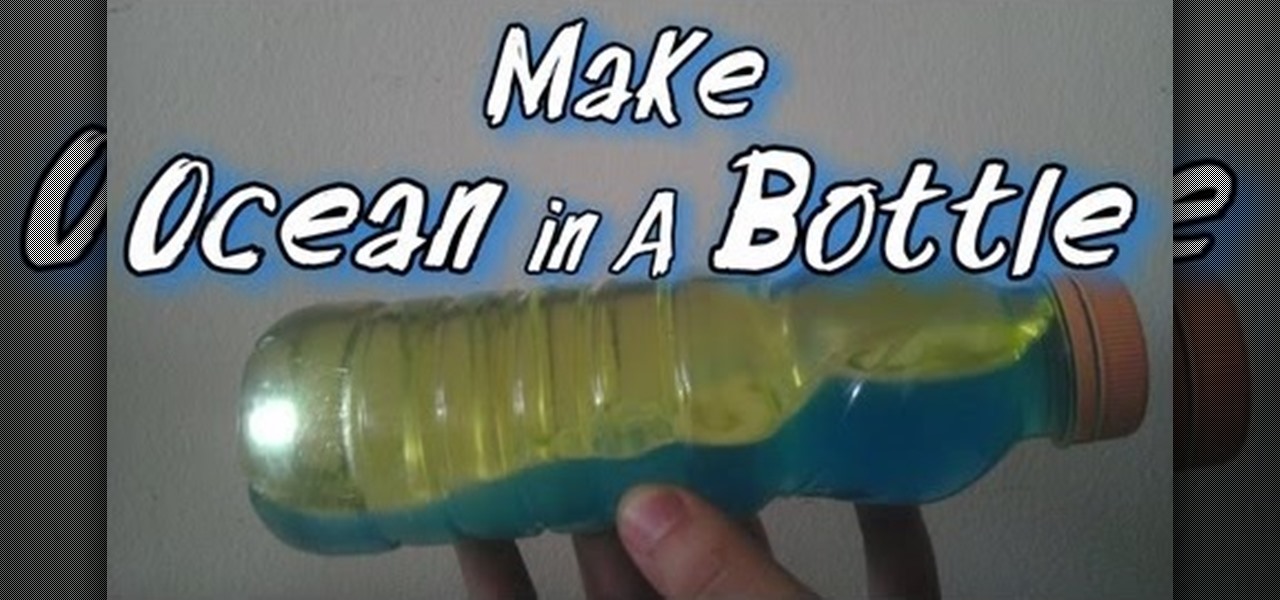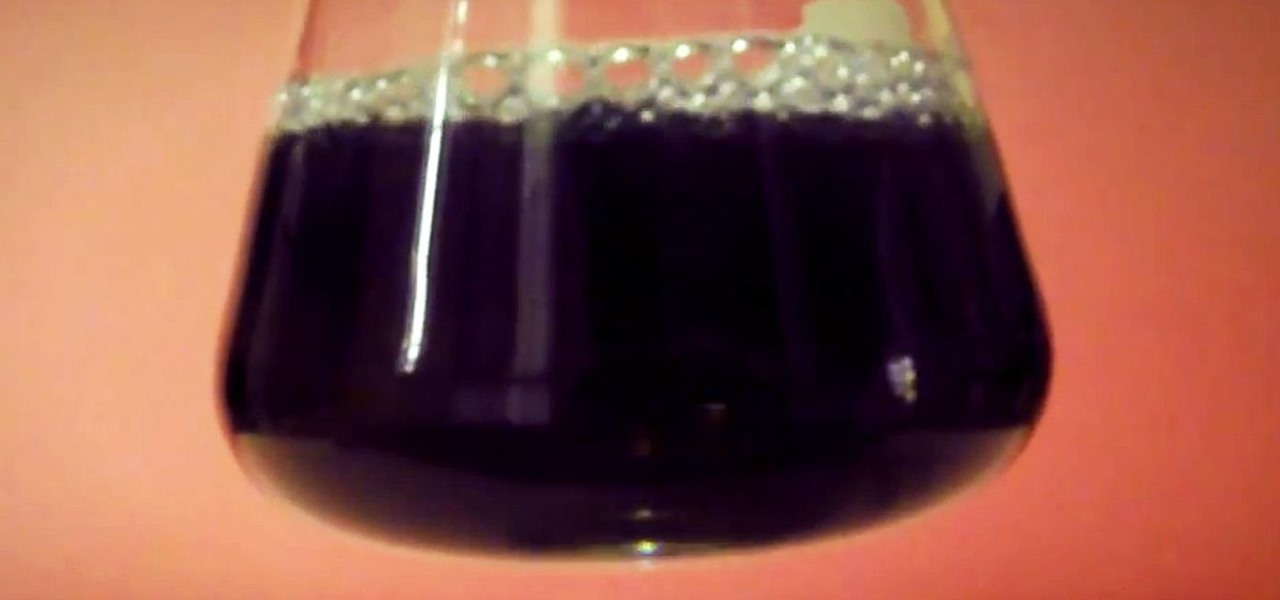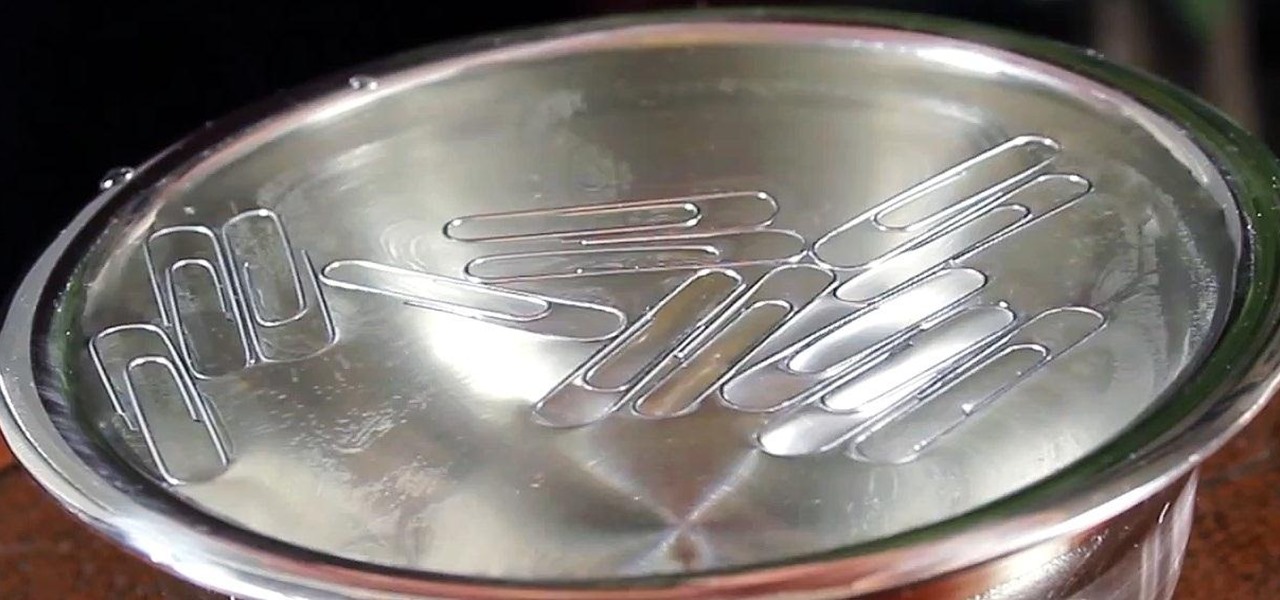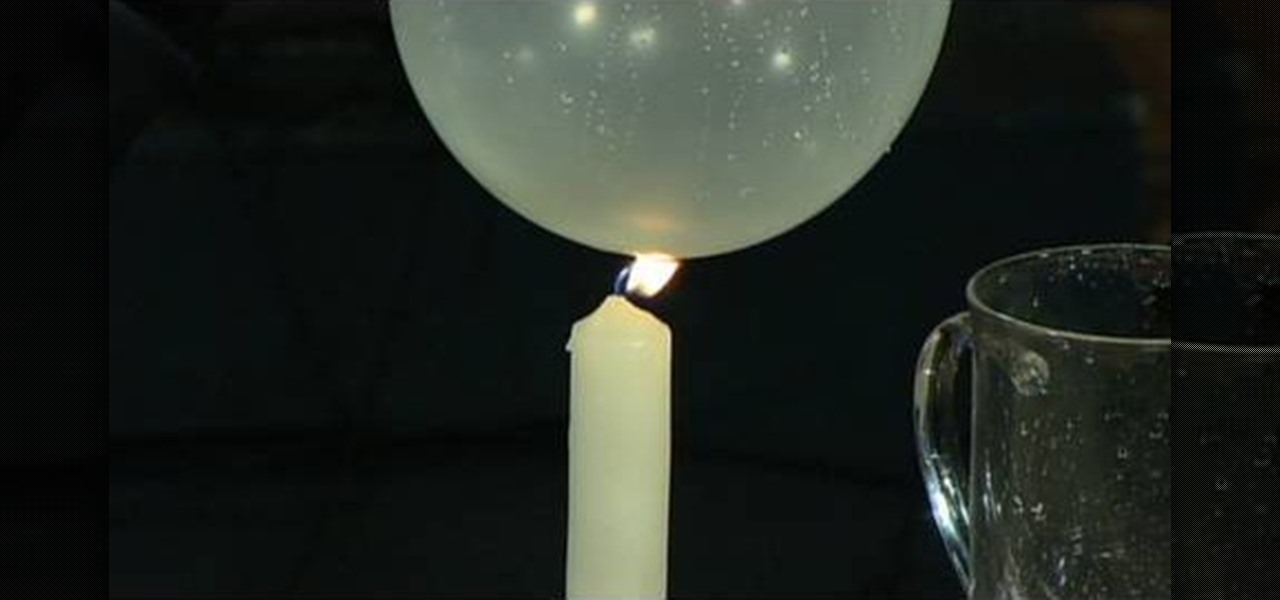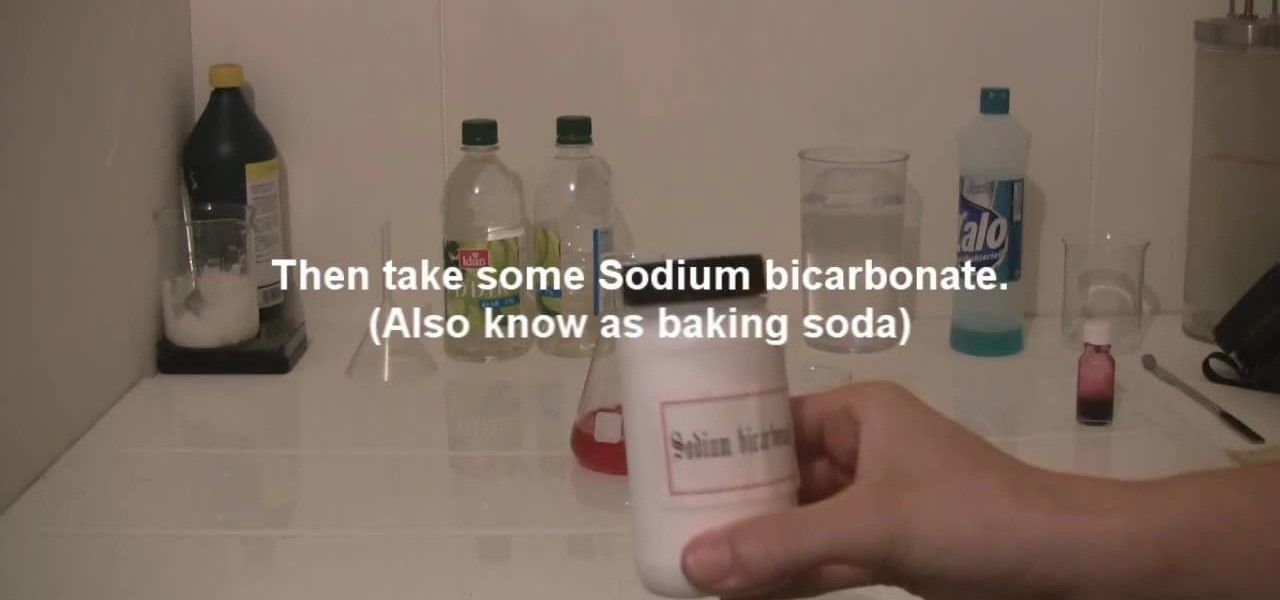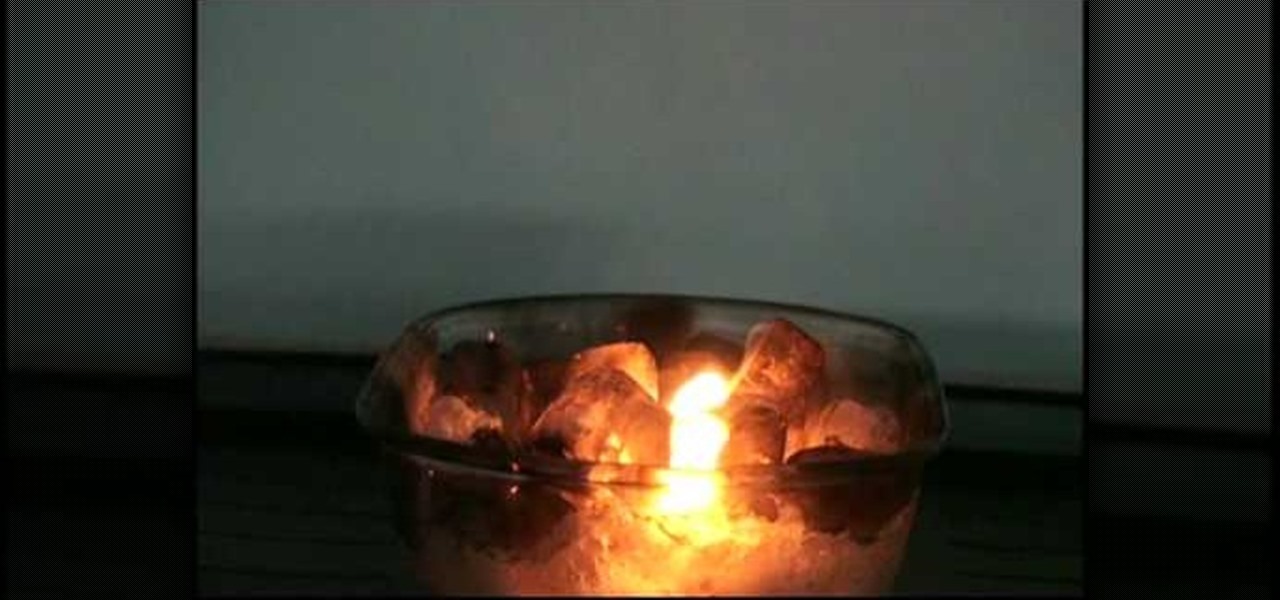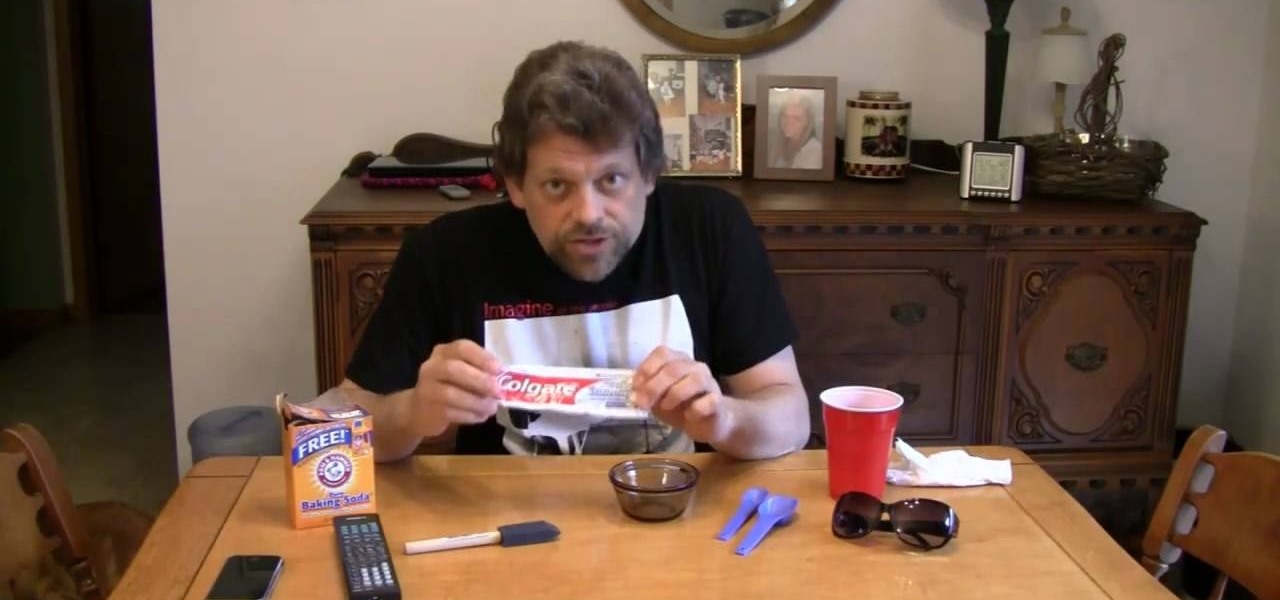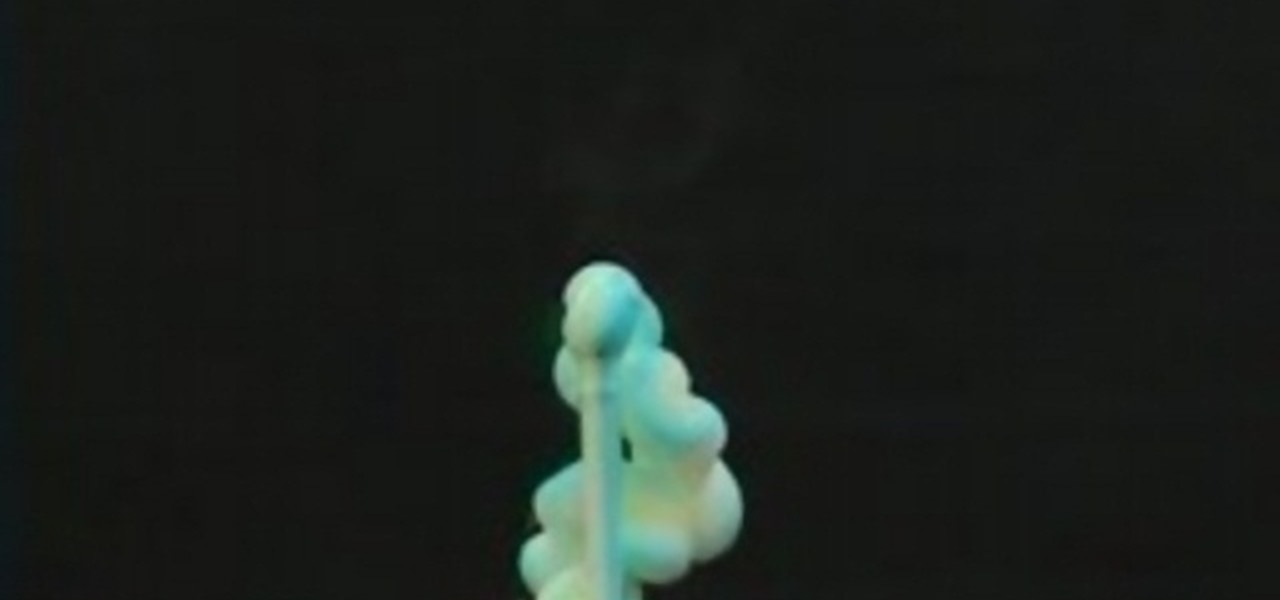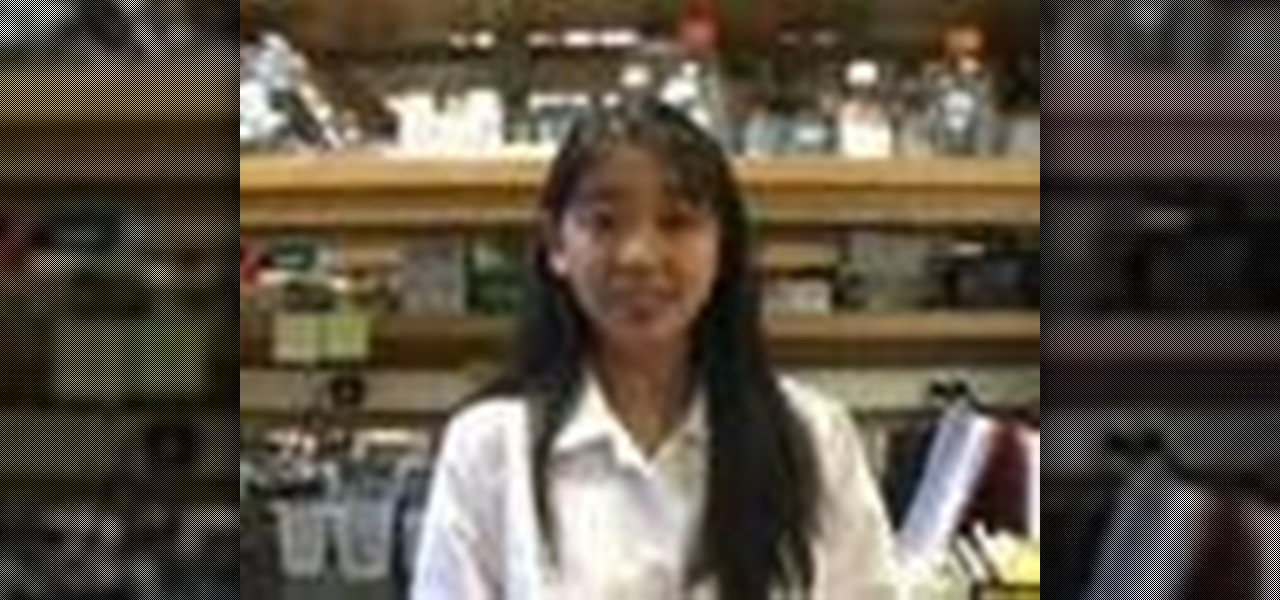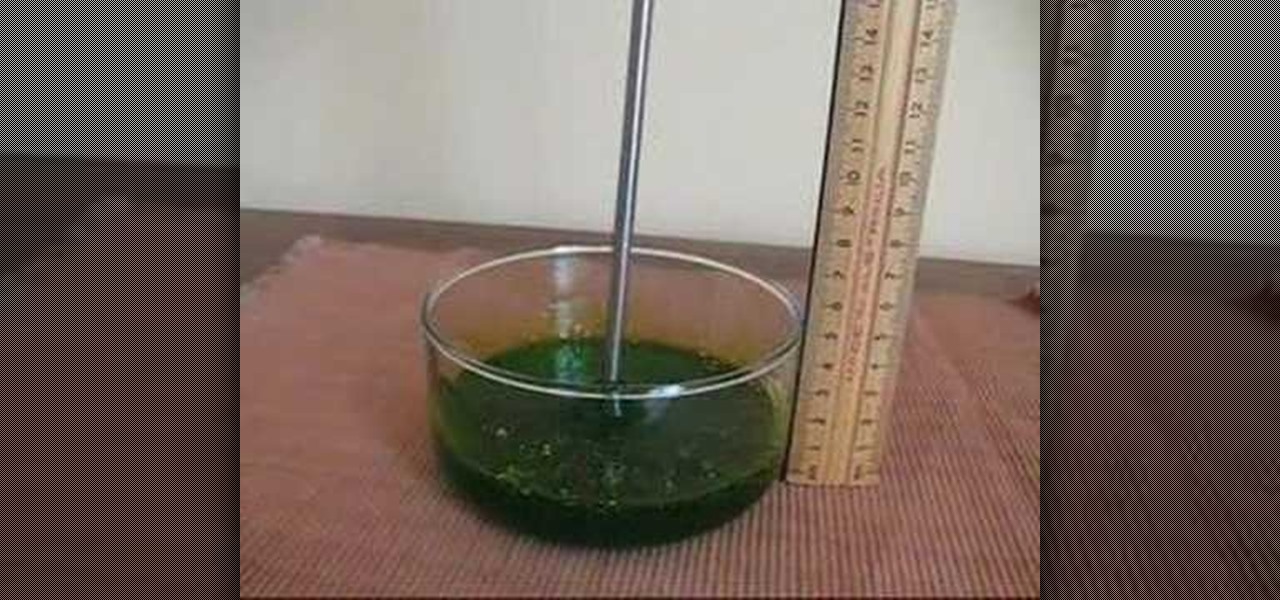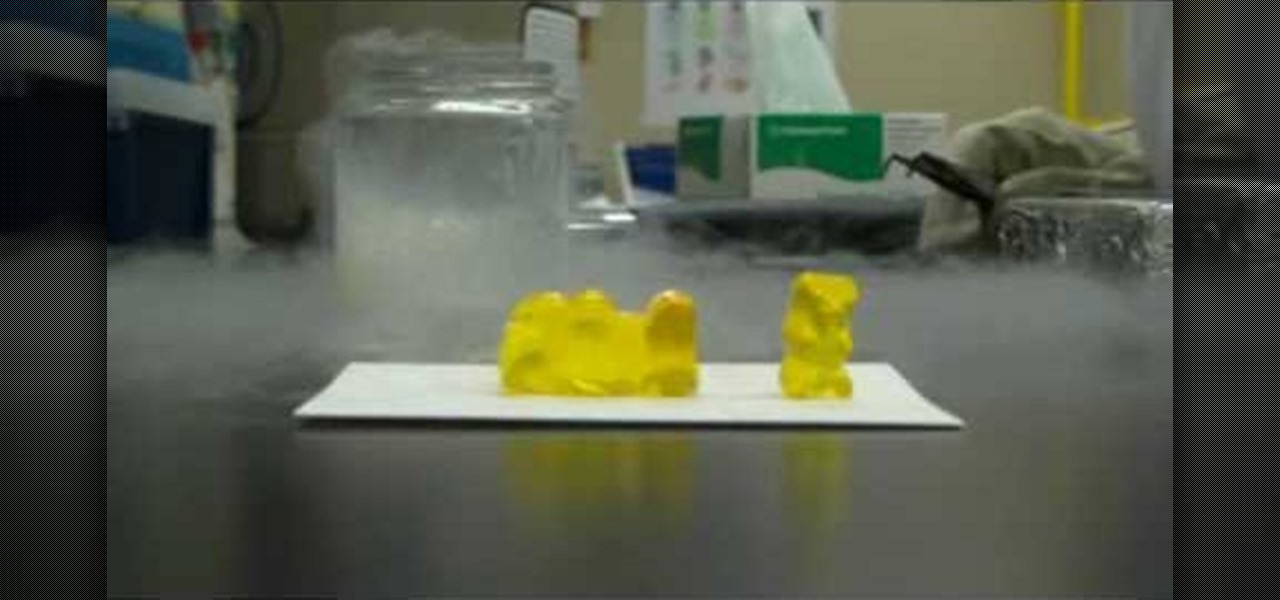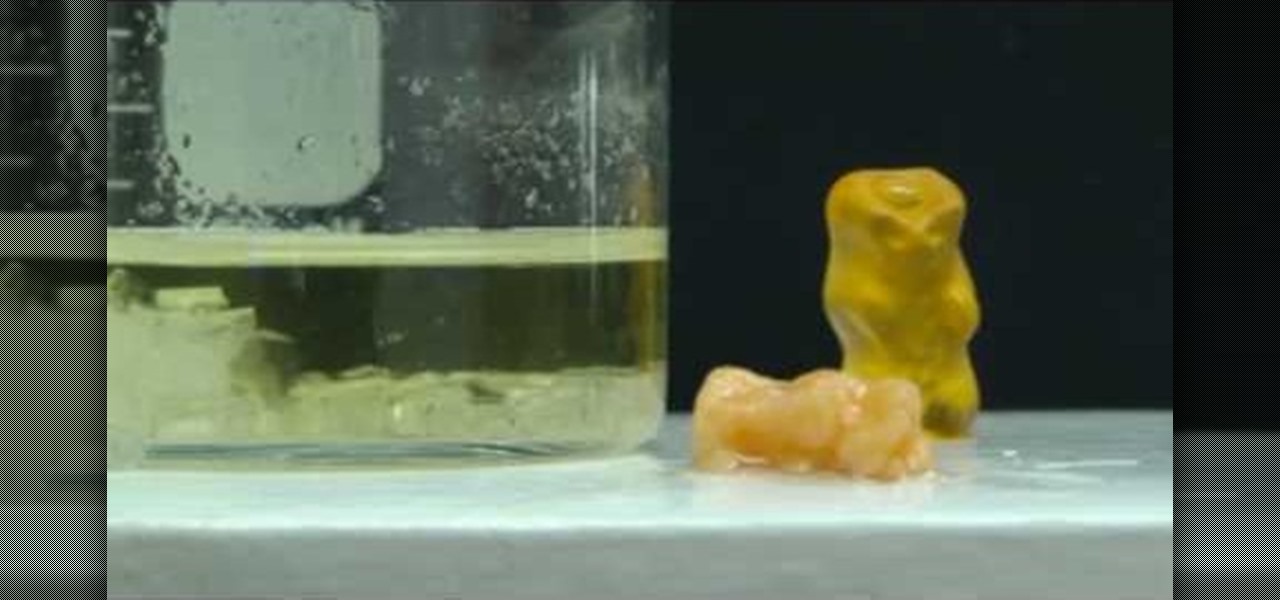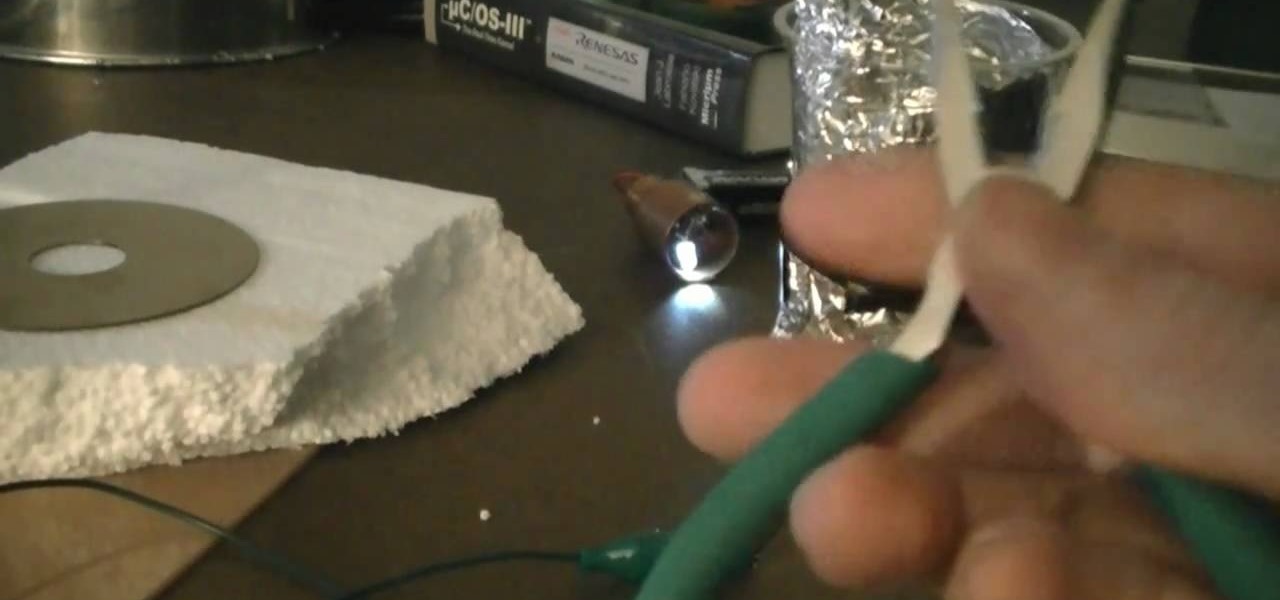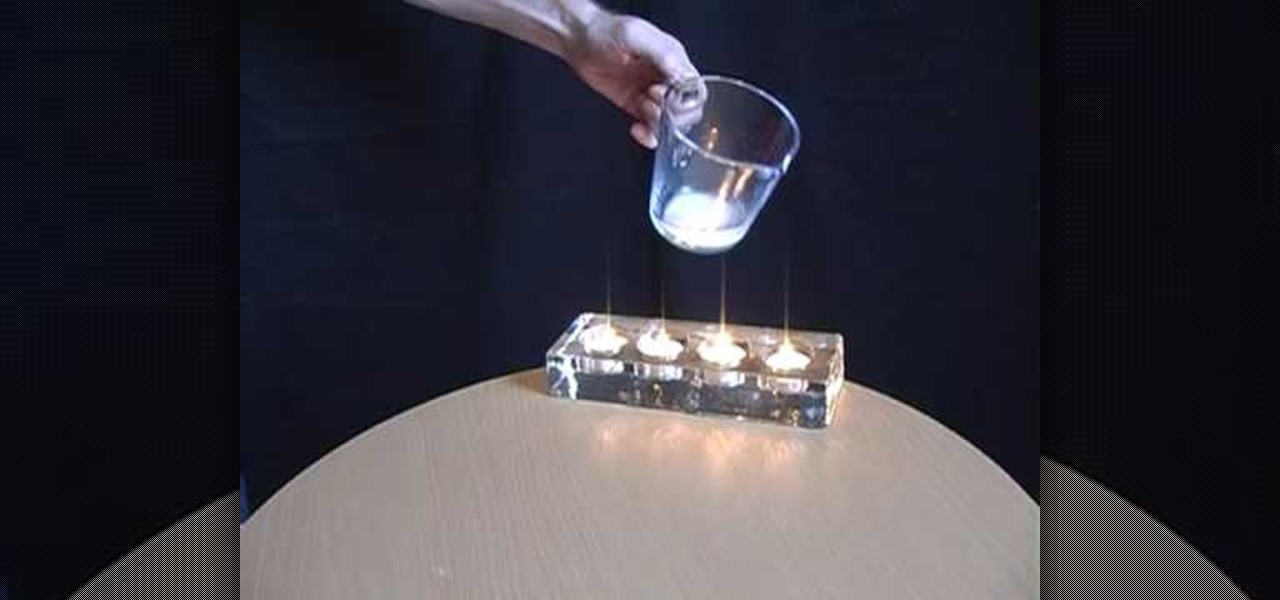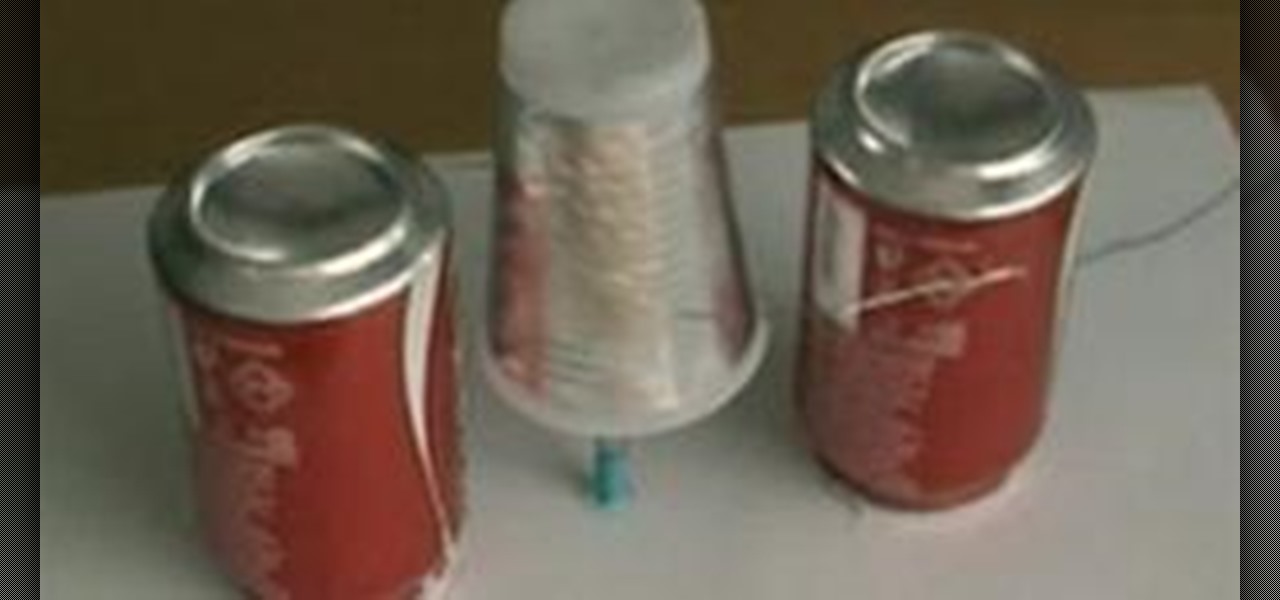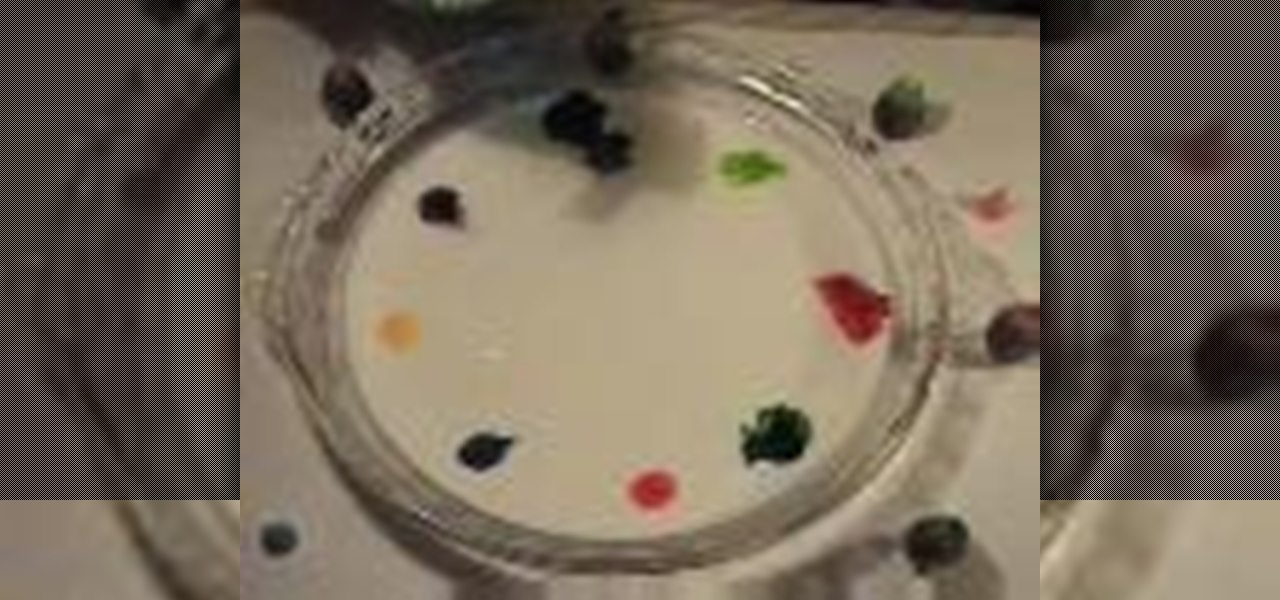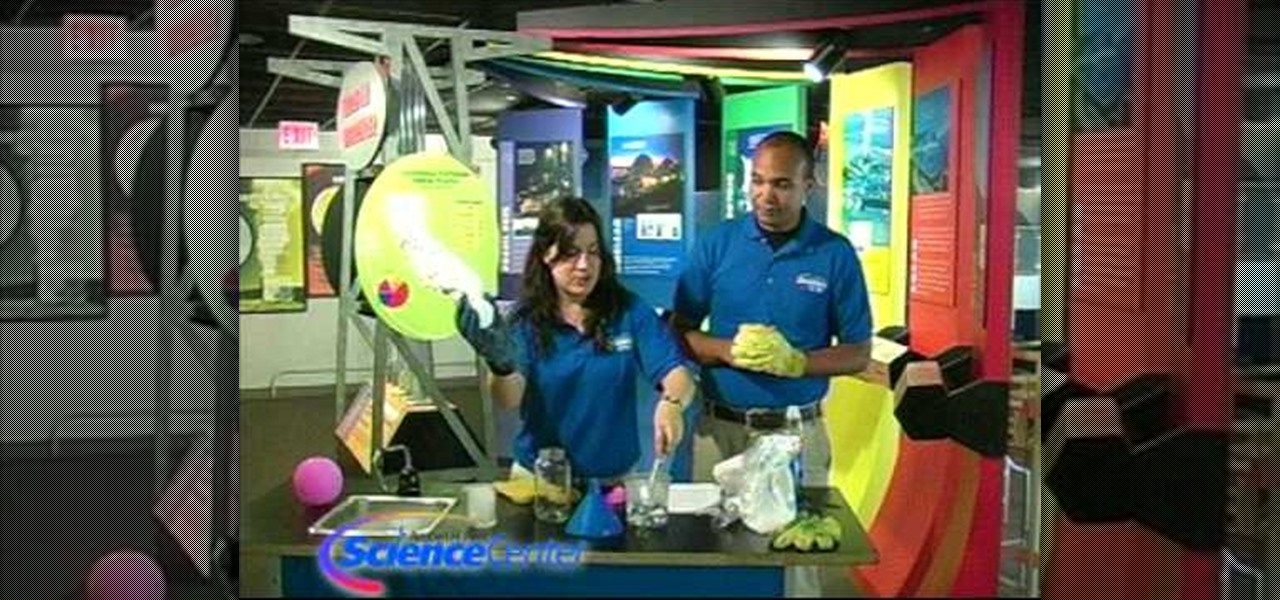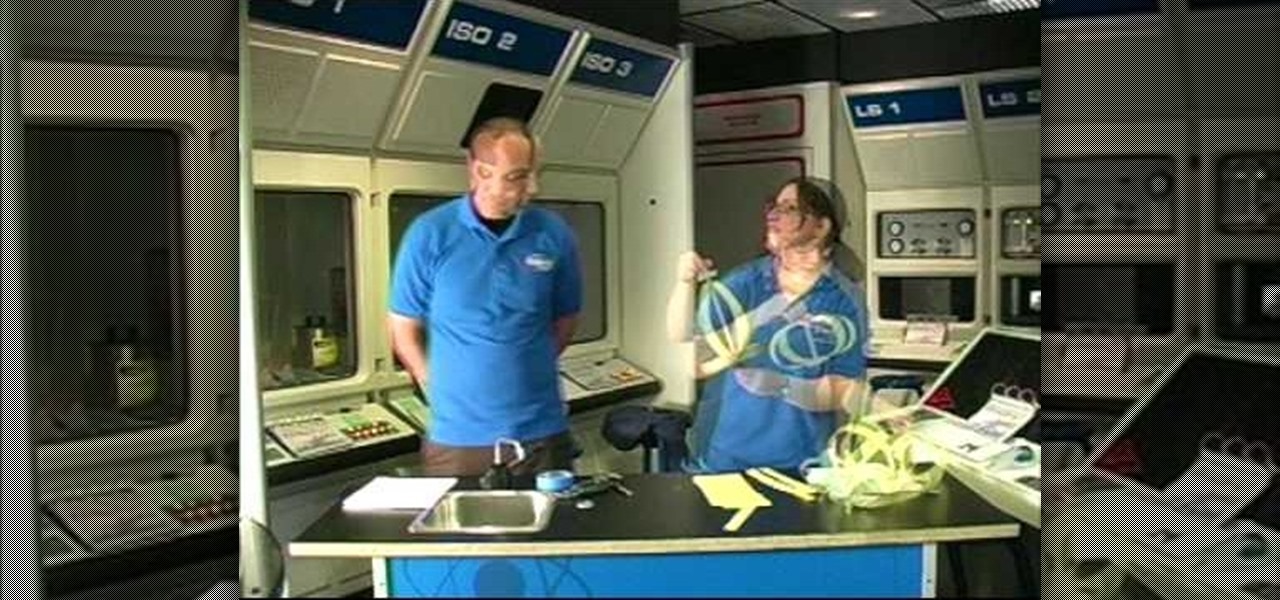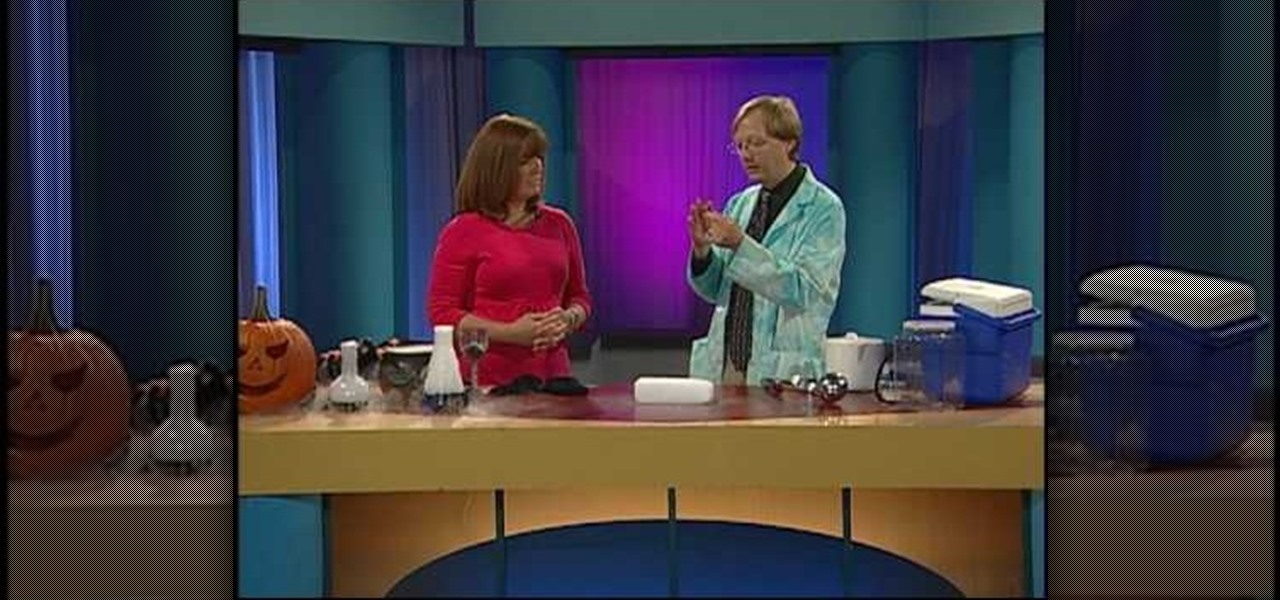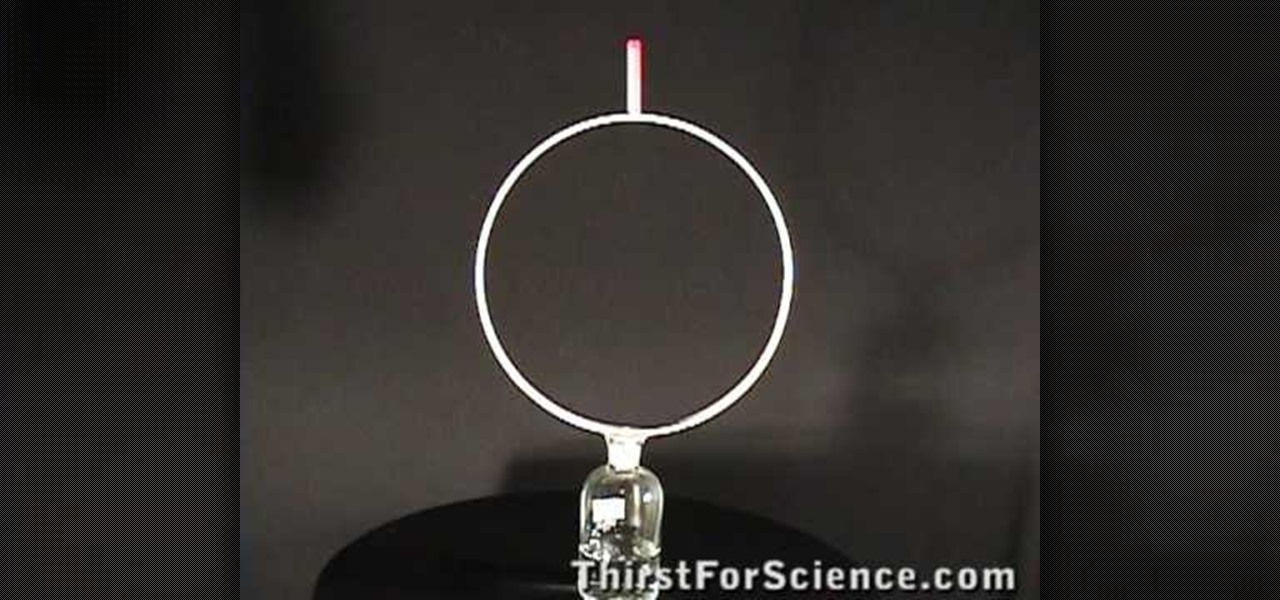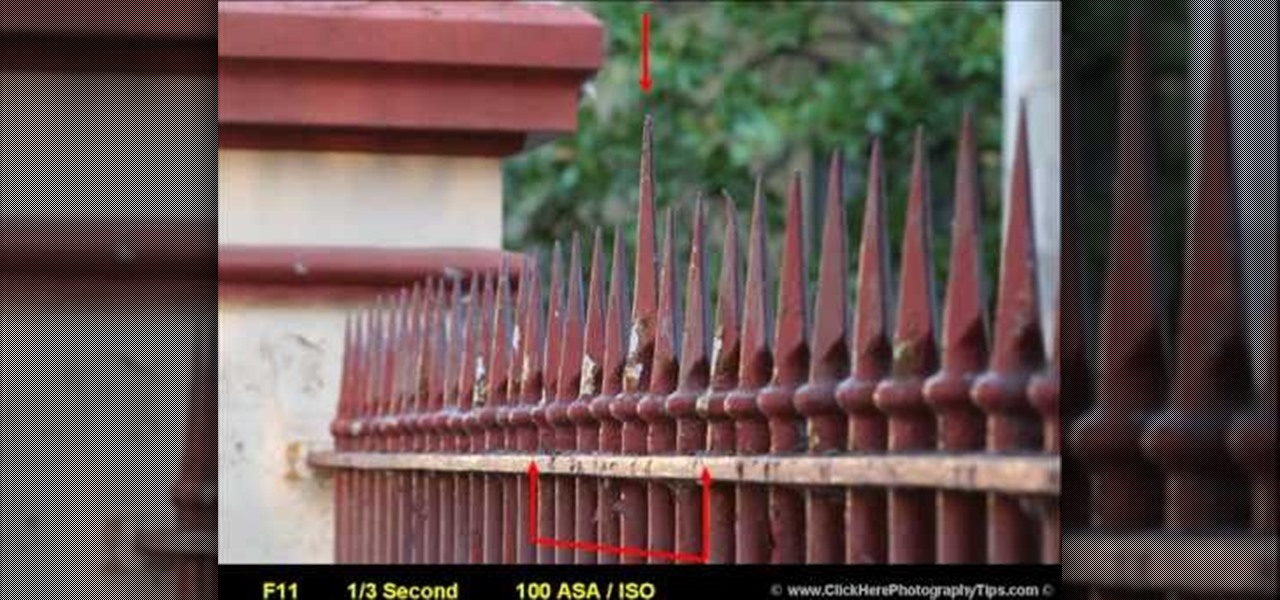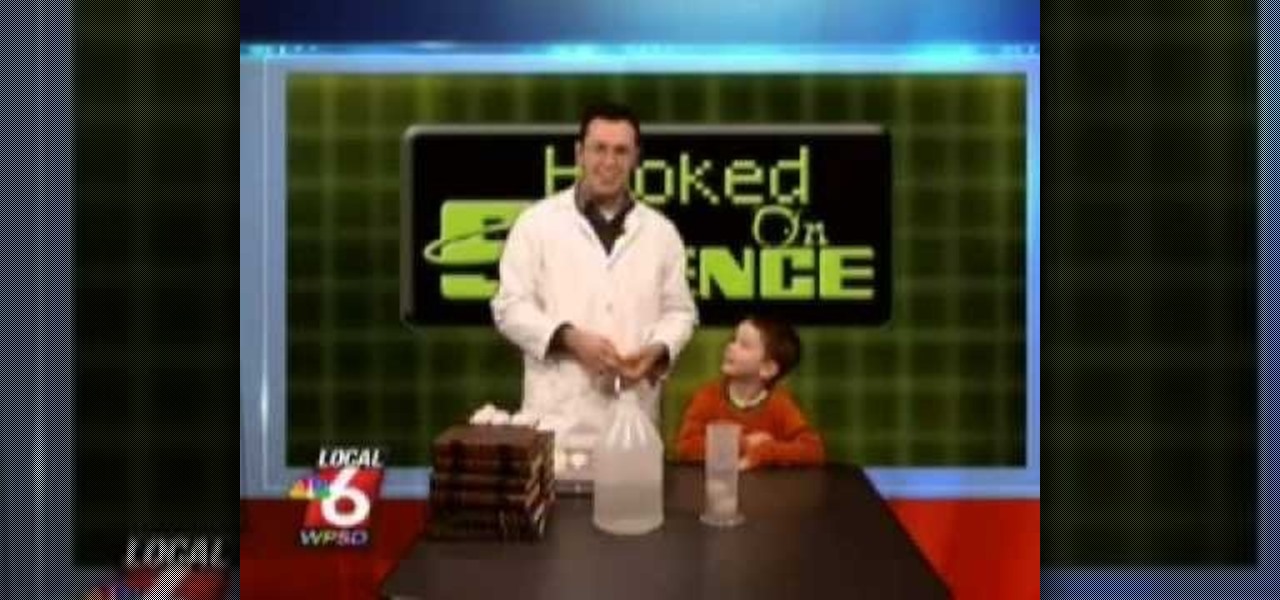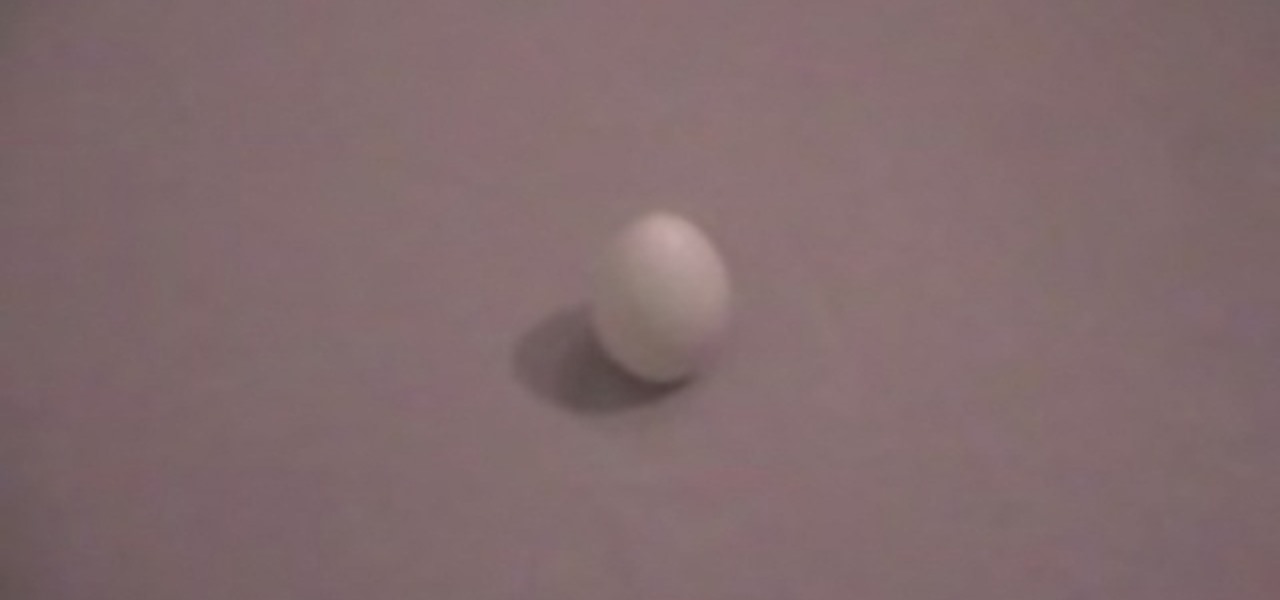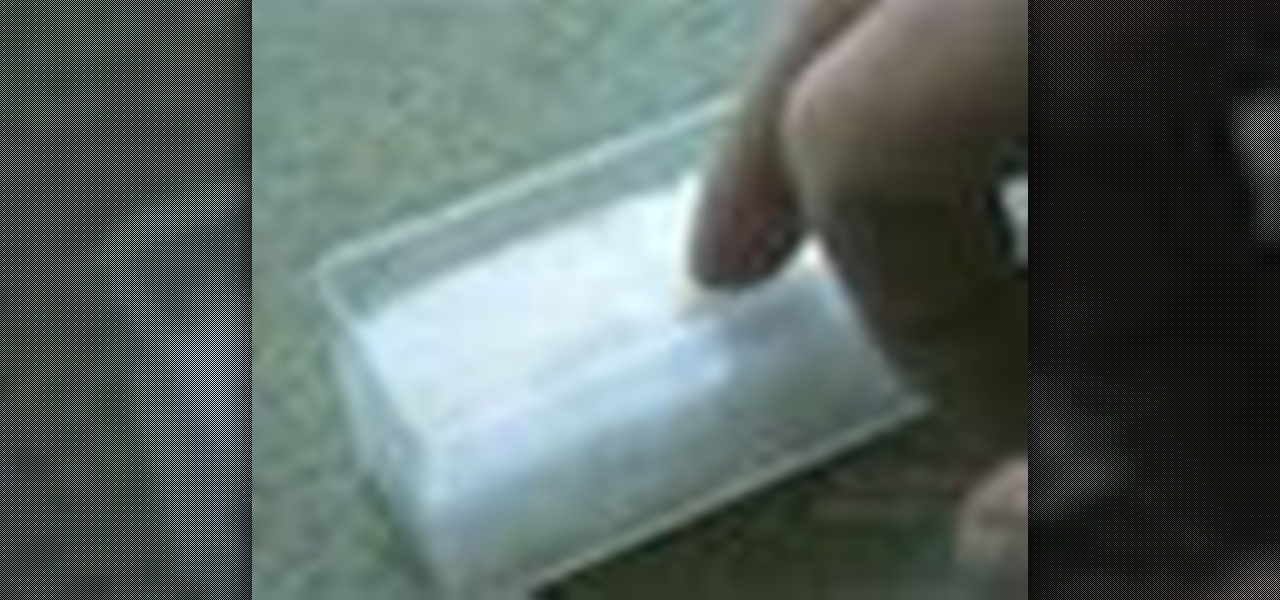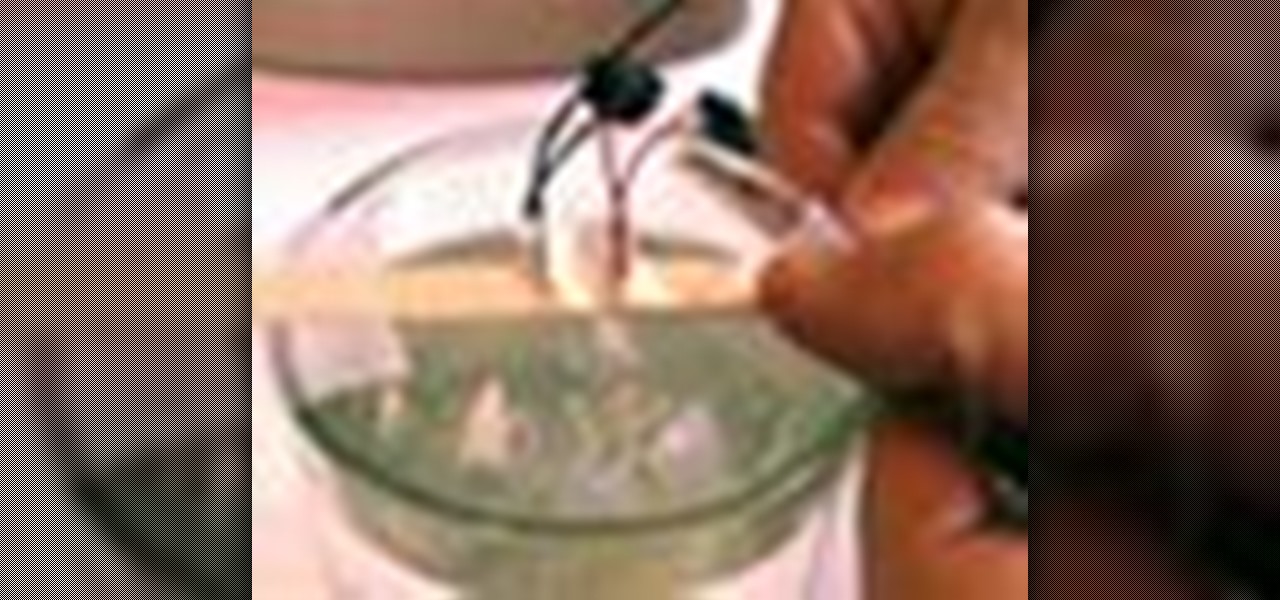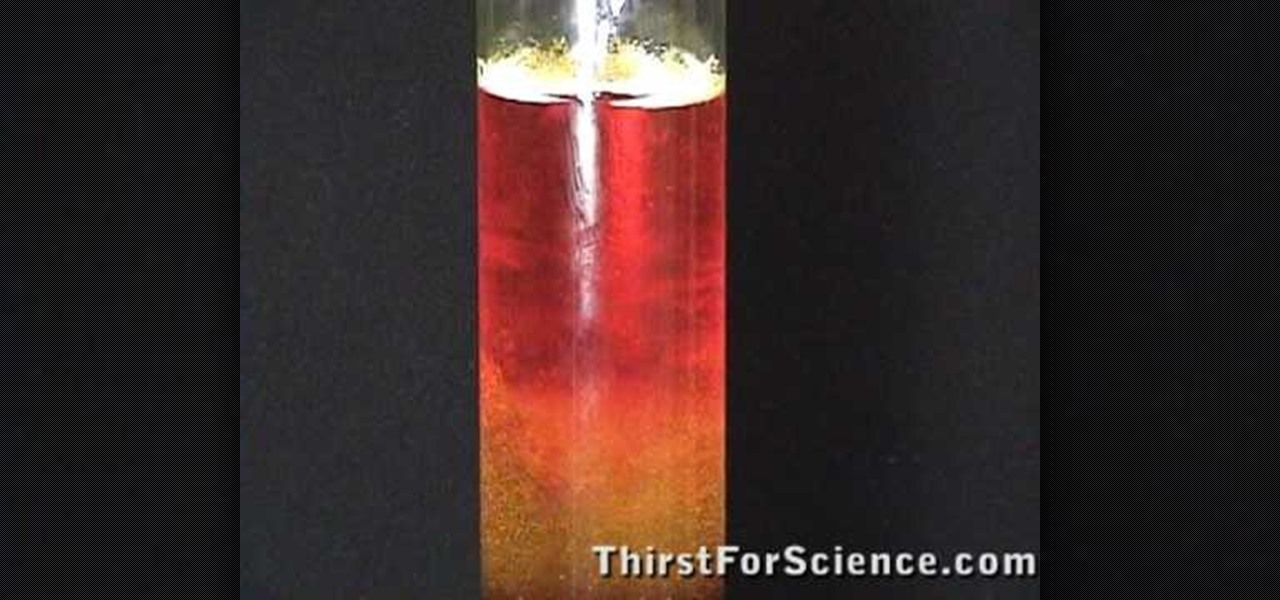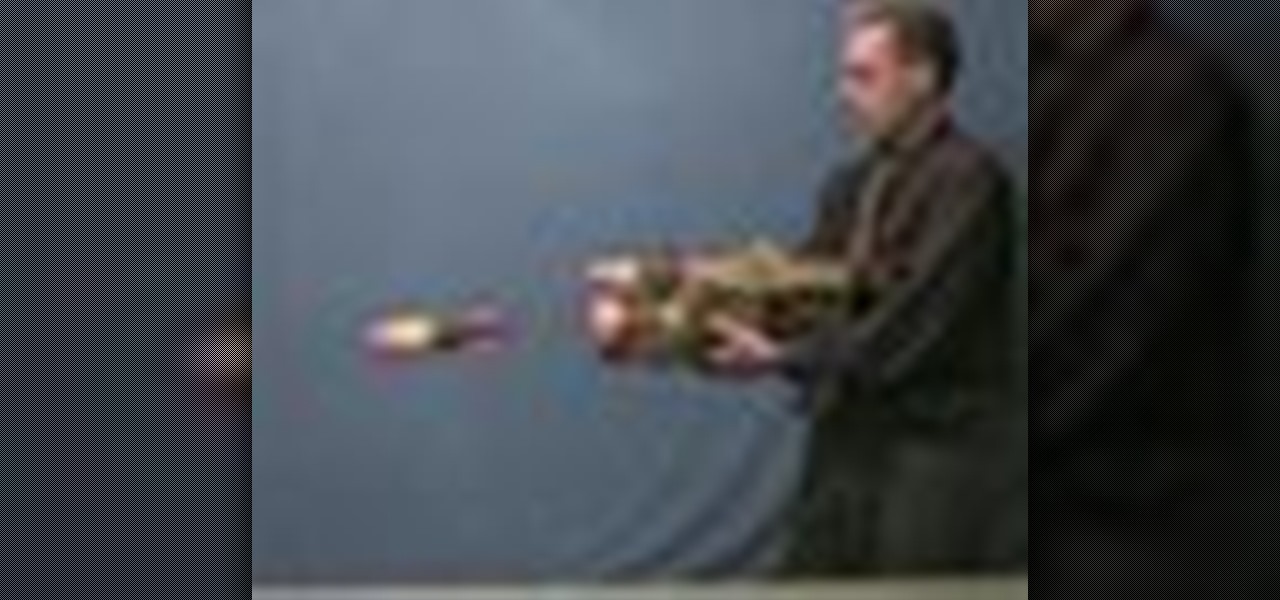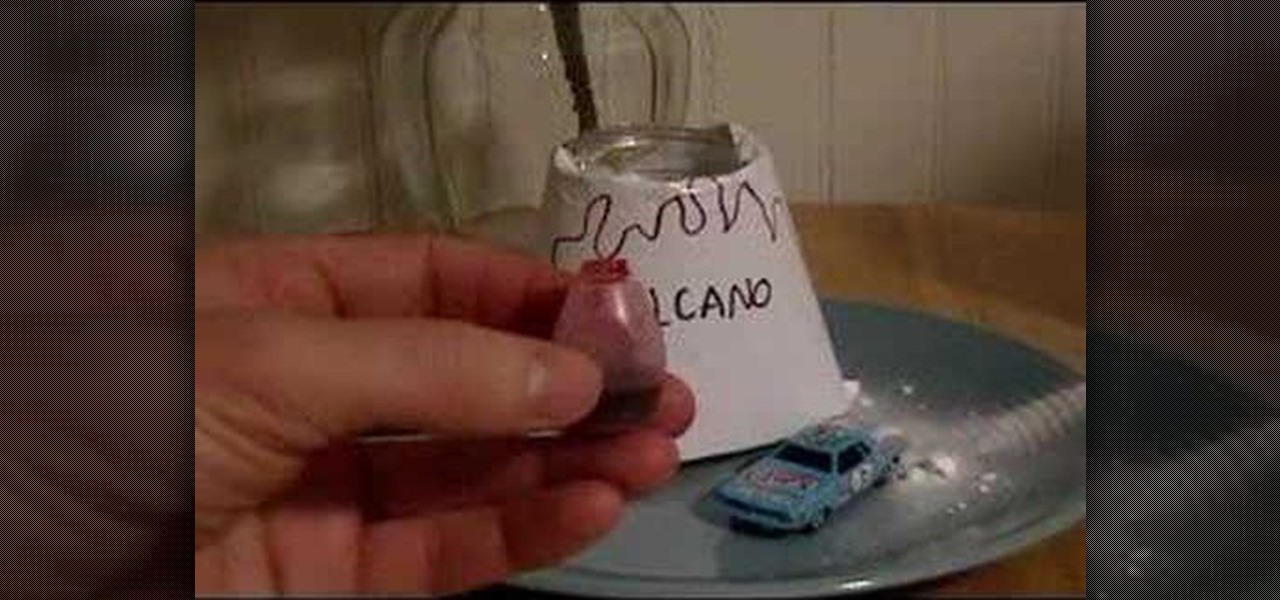
Vinegar and baking soda (and red food coloring if you're going all out) combine to make quite the little explosion. After you've made a little paper volcano, watch this video tutorial and learn how to carry out a really easy science experiment. You've probably made a volcano before, but you're never to old to make a mess in the name of "science."

In this science experiment tutorial learn how to get a candle to burn underwater. Impress your friends with this amazing trick.

A science experiment for all ages. Keep the kids busy over the holiday. This demonstration will entertain them for hours. You can have fun making one for each of the kids in your family. All you need is a penny and a bottle.

Pete Sears teaches you how to experiment with your chords while playing the piano. This is a great way to begin learning how to improvise.
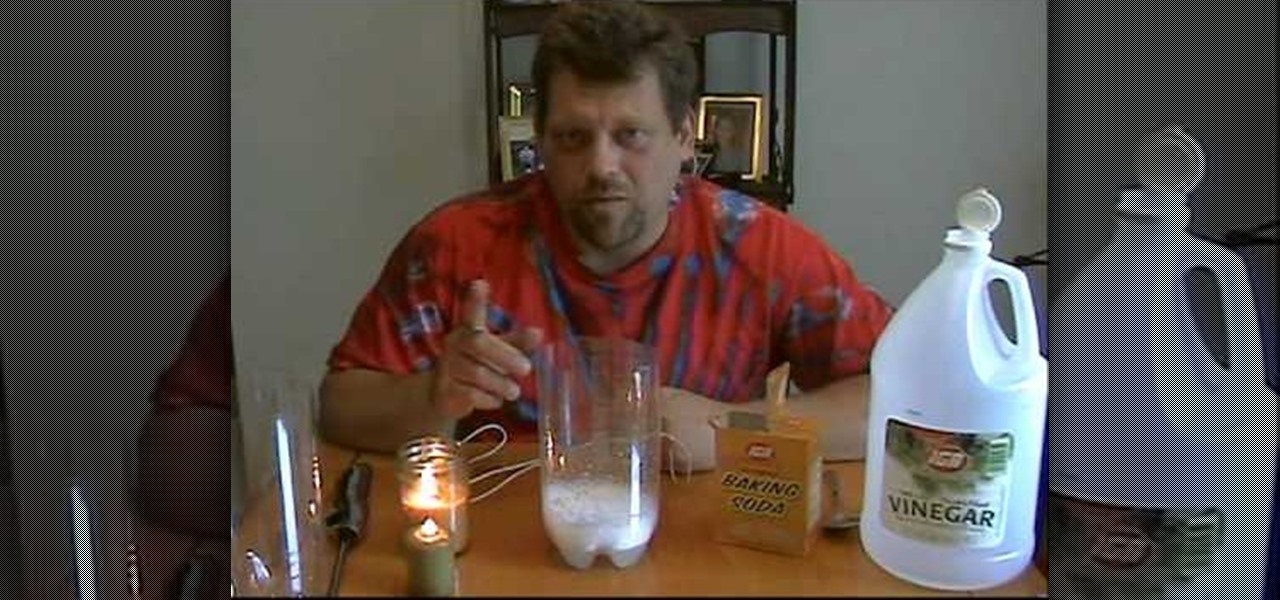
Mr. G plays with chemicals and fire (what a surprise), for a really cool demonstration. An experiment you'll want to try, and probably can try immediately, as all materials (vinegar and baking soda) are likely in your house already. Exothermic reaction and gas displacement at its best!
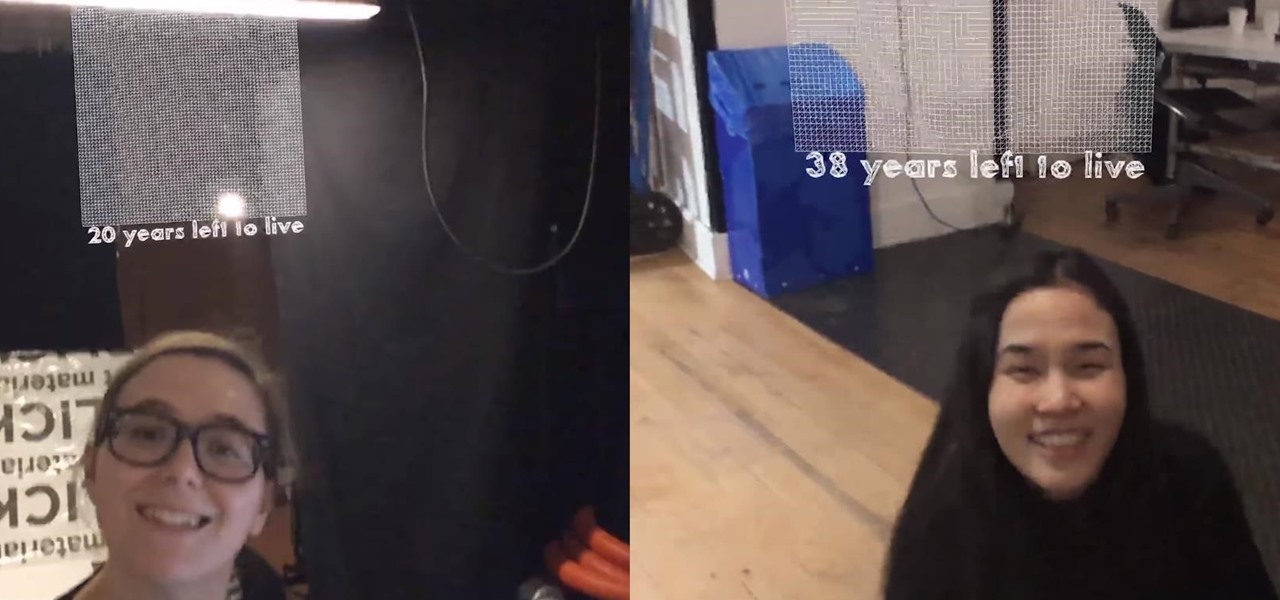
Do you know when you're going to die? Your iPhone or iPad does. That's the premise behind Death Mask, an experimental app developed by Or Fleisher and Anastasis Germanidis.

Water is such an essential substance for so many facets of life. Why not experiment with it? This experiment will teach you how to create a water display like those Japanese water falls.

Cool Science Experiment with water and Cooking Oil.

In this video, I will show you how to perform the color-changing, blue bottle experiment with common household products.

This quick video demonstrates the classic experiment of making a paperclip, or multiple paperclips, float on water.

This is a cool science experiment to show what a great heat conductor water is. You'll need some balloons, a candle and some water. Check it out and be amazed! Common sense tells you that it's impossible to boil water in a paper bag, but this classic parlor trick was a favorite of the Victorian magician. The real difficultly in performing this effect is making it look harder than it is! As you might imagine, the secret lies in yet another amazing property of water - it's ability to conduct he...

In this video tutorial, viewers learn how to make an erupting volcano with soap. Begin by adding some vinegar into a flask/baker. Then add some soap into the vinegar and stir it by shaking the flask/baker. Users may choose to add some food coloring to make the mix look more like lava. In a separate, add some water and baking soda. Then stir it to mix. Pour the baking soda solution into the soap and vinegar mixture. This video will benefit those viewers who are interested in science and experi...

In this fascinating "how to" video, you will see how a simple process creates the illusion of ice that is burning. Only a few items are needed to enact this scientific experiment. As the narrator describes, "Calcium carbide reacts with water to form acetylene gas." To illustrate, the video shows a bowl of ice cubes, to which the special ingredient is added. As the ice melts into water, it reacts with the calcium carbide, forming the high flammable acetylene gas, which is often used in welding...

Ever wonder how to make your very own faux night vision goggles? Well, Mr. G shows you exactly how to make your own night vision "glasses". Step by step, soley using household products. This experiment is just too good to be true. A foolishly easy experiment that will make you laugh and cry at the same time. This video is just for fun, don't let it fool you!

This video shows how sublimation works. The instructor shows how to mix bubbled water, ice water and dry ice to create dry ice smoke. He is essentially making a hand made fog machine. This task must be done carefully because if the solution is isolated and concealed it will build pressure and possibly explode. Take extreme caution in doing this home experiment. The instructor also shows you how to make music spoons using temperature changes on the metal.

Try out this science experiment... a classy chemical demonstration. Watch this video tutorial to learn how to make a foamy elephant toothpaste chemical reaction. There's a reason why they call this elephants toothpaste.

Try out this science experiment... demonstrate pressure and volume. Watch this video tutorial to learn how to create an explosion with liquid nitrogen and a plastic bottle. See the demonstration of the exploding reaction of the pressure build up in the bottle.

Have you ever wondered what your DNA looks like? You have probably heard that DNA is a double helix, which is a pair of parallel helices intertwined about a common axis, but how do we know that? How can people look at DNA?

Check out how you can create three viscolastic effects with this how to video. A dyed polyvinyl solution crossed linked with sodium tetraborate in solution is found to exhibit the following three different viscoelatic effects:

If you've ever taken high school chemistry, you may already be familiar with the ability of liquid nitrogen to freeze soft object so hard that they will shatter. This video will teach you a fun experiment utilizing this property of liquid nitrogen. It invovles gummi bears frozen and soaked in water or liquid nitrogen (or not, for the control) and then smashed in a most satisfying way.

Gummi Bears are great for science experiments due to their gelatinous makeup. In this video you will learn how NOT to make a Gummi Bear conduct electricity, but in fact how to use them to demonstrate osmosis and crystallization by preparing them for conductivity.

An electrophorus is a type of capacitor that generates electrostatic energy. Most of you probably know this force as static electricity, the domain of door handles and polyester shirts. It can be used for all sorts of other fun science experiments though, and this video will show you how an old hard drive, some plastic, Styrofoam, foil, a cat, and other simple materials can be used to make a a simple functioning electrophorus.

The best part of science class for many was the awesome demonstrations and experiments teachers use to demonstrate scientific principles. This video will teach you how to capture some of that magic by performing ten awesome science party / magic tricks, like relighting a match with smoke and rolling a can around on it's rim.

This is an amazing experiment! Make a motor from a plastic cup. What is needed? Use two empty cola cans, a plastic (paper) cup, a ball-point pen, and more!

Though your kids will think this "rainbow" milk looks really cool and will instantly want to consume it, doing so may not be the best idea. That's because in order to create this rainbow milk you'll need to mix in color additives and very non-edible soap.

In this video, we learn how to do an animal blubber (fat) glove experiment. You will need: a big bowl with ice water in it, 4 plastic bags, thermometers, and some vegetable shortening. To start, you will take the shortening and scoop it into plastic bag and then stick one of your hands in it. After this, stick two bags over your opposite hand with the temperature into it. Then, you will stick each of your hands in the ice water and see which one lasts longer in the ice water. The fat should k...

In this tutorial, we learn how to experiment with dry ice. You can buy dry ice from any grocery store, so grab that and you will also need some soap. After this, grab the dry ice with some thick gloves and set aside. Then, put some hot water inside of a container with some soap. Put the dry ice last inside of the container. After you're finished, you can wait to see the reaction occur! It will start to smoke and make different noises which is fun to watch and see! When done, clean up your are...

It is a well known fact that due to the rotation of the Earth about its own axis has a bulging effect on the equator and a slight flattening effect at the poles. This experiment tries the reproduce the same effect using simple materials.

In this tutorial, Science Bob shows us how to do a science experiment with dry ice. First, take a block of dry ice and place a quarter on top of it. Make sure you are using rubber gloves when you do this, it's dangerous to touch gloves with your bare hands. When you press the quarter down, it will cause it to vibrate very quickly. You can put any type of metal on top of the dry ice and it will make different noises. This is only one of the many things you can do with dry ice. You can also use...

Newtons proposed the concept of inertia. According to him an object at rest tends to stay at test and an object in motion tends to continue in motions unless acted up on by an external force. This is the principle of inertia. The tendency of the body to continue to stay as it was is called its inertia. You can demonstrate this principle with a simple experiment. As shown in the video when the hoop is pulled out the pen cap falls in to the bottle. Here the hoop is acted upon but the cap is not...

Learn how to use depth of field with help from this photography tutorial. Although it may seem that depth of field is a confusing factor in photography, it's actually quite easy to understand & adjust once you've gotten the hang of it. Depth of field (or, DOF) is a great way to experiment with your photography & improve your skills as a beginner photographer. When taking your photograph using DOF, it is imperative to remember that the shutter speed and aperture (or F-stop) need to change at e...

Eggs aren't just for eating! Did you know you can do some cool science experiments with eggs? Get a naked egg by leaving it in vinegar. Need to know if your egg is cooked? Spin it!

Don't just drink your milk... have fun with it! Check out this science experiment video to see how to curdle milk with a battery and salt. This experiment can be done by anyone with a few simple materials... milk, a 9-volt battery, a small glass or plastic cup, salt and a stirring rod.

Almost everybody knows this trick, but do you? Just watch this science experiment video that you can do in your own home, in your own kitchen, to see how to suck an egg into a glass bottle and hear a crazy sound.

Learn how to find out exactly how strong a strand of your hair is with this science experiment.

In a previous soap making instructional we showed how to make soap frosting using MP soap base and whipped soap. There was quite a bit of soap frosting left-over from that project and we weren't sure what to do with it. Could it be re-used, re-mixed, remelted, or was it a total waste? We did some experimenting to find those answers.

Watch this amazing video tutorial to learn how to instantly make ice. This is a simple experiment turning a liquid to a solid with just a touch. Just find some sodium acetate and water to start. Boil it, then chill it, then touch it! And in an instant you have ice! If you want to be creative (or you're just bored on a Sunday afternoon) you can pour some ice sculptures to amaze children of all ages. Check out this awesome how-to video and cook up some hot ice.

The hydrogen fuel cell has great potential to replace carbon-based fuels in our vehicle fleets and stave off global warming. It's a difficult concept intellectually, so why not make this fun little science experiment to try it out for yourself? Yes, by following these simple instructions you can make a small hydrogen fuel cell at home that will even power some devices!

In this how-to video, you will learn how to stack liquids at home. This will make for a great experiment. You will need a tall, transparent container, molasses or honey, liquid soap, water, vegetable oil, and rubbing alcohol. You might want food coloring and items to float in the container. First, add the molasses to the container. Next, add the dish soap and water. You can add food coloring to this. Make sure to pour it on the side of the container. Add the vegetable oil on top of the water....

This video illustrates how to do a "free fall" experiment to understand orbits. Here are the following steps:








